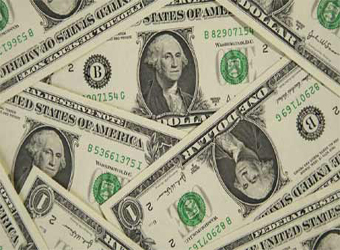The dollar fell in recent days, but analysts weren’t pointing to weaker-than-expected U.S. inflation data on Friday.
Instead, they fingered a “Trump discount” as market-positive aspects of the administration’s agenda appeared to be missing in action.
Richard Clarida, global strategic adviser at Pimco, the bond giant with around $1.6 trillion under management, told CNBC that disappointment over the progress of President Donald Trump’s agenda was looming over the market.
“A lot of people came into this year expecting a big stimulus from Trumponomics, potentially a big tax cut, infrastructure,” Clarida told CNBC’s “Squawk Box” on Monday. “And of course, we haven’t got the tax cut, infrastructure is down the road and Congress is squabbling over health care. So some of the folks who really thought this would be a gangbusters year have been disappointed.”
Clarida added that the health-care debate has “held the rest of the economic agenda hostage.”
That’s because around half of the cuts in health-care spending were earmarked to finance the proposed tax cuts.
On Saturday, the Republican leadership delayed Senate consideration on the health-care legislation as U.S. Sen. John McCain was recovering from surgery, suggesting even the procedural vote count may come down to the wire.
To be sure, the dollar’s tumble was both swift and hard on the heels of the disappointing data on Friday.
Flat consumer inflation and a surprise drop in June retail sales triggered new doubts that the Federal Reserve will be able to raise interest rates again this year.
The consumer price index, measuring what consumers pay for everything from apparel to used cars, was up 1.6 percent on-year in June, the fourth month of surprising weakness.
Retail sales fell 0.2 percent in June, down for a second month, raising concerns in markets about the strength of the economy.
On Friday, Ian Lyngen, head of U.S. rates strategy at BMO, told CNBC that Fed funds futures were reflecting odds for another U.S. rate hike this year of just 46 percent, down from 52 percent before the data.
The dollar index, which measures the greenback against a basket of currencies, fell to as low as 95.088 on Friday, before slipping as low as 95.065 during Asia trade on Monday, marking the lowest levels since September — before the U.S. presidential election.
The greenback also touched multi-month lows against the euro, the British pound and the Australian dollar.
But Ray Attrill, co-head of foreign-exchange strategy at National Australia Bank, told CNBC’s “Street Signs” on Monday that the data didn’t fully explain the dollar’s weakness.
“There’s more to it than just the data continues to underperform expectations,” Attrill said, pointing to historical models of the greenback’s relationship with interest rates. “The dollar is trading 5-6 percent weaker than where it should be purely on the back of interest rates.”
Like Clarida, Attrill pointed to the health-care legislation debate in Congress.
“It’s unlikely they can bring that to the floor this week,” he said. “That’s further going to play to the so-called Trump discount, because I think the view is that rightly or wrongly, that if we can’t get health-care reform done, then we can’t move on to the fiscal agenda — in particular tax reform.”
Of course, other aspects of Trump’s agenda may not face such a tough audience as health care.
The administration also reportedly has “learned its lesson” from the health-care legislation debacle, and was planning a more coordinated approach to tax reform.
On Sunday, Axios reported, citing sources familiar with the matter, that the White House had engaged in high-level planning and organization on the tax effort.
Source: CNBC



